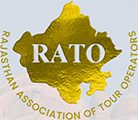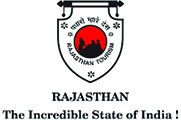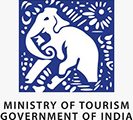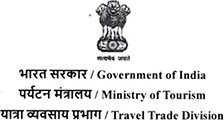Golden Triangle Tour with Udaipur
With Golden Triangle Tour with Udaipur, you encounter the exceptional family trip beginning from New Delhi-Jaipur – Agra – Udaipur, four cities full rich in cooking, culture, and amazing designs get the greater part of everything in 07 nights and 08 days. It begins with the pleasure of capital city New Delhi taking you to the city of Mughal, Agra; encounter the sentimentalism of the pink city Jaipur and the city of lakes Udaipur. With the major social features for the family, the visit is enriching and inspirational.
- Walk the narrow lanes of Chandni Chowk
- Discover the magnificent Fatehpur Sikri
- Explore the beautiful Taj Mahal
- Experience the chaotic charm of Pink city
- Enjoy the evening by beautiful lakeside, Udaipur
Cities You Can Visit with Golden Triangle Tour with Udaipur Packages
- Delhi
- Jaipur
- Agra
- Udaipur
On arrival, you will be welcomed by our representative at the airport, after which is the transfer to the hotel.
After breakfast at the hotel, we proceed to the exquisite and truly picturesque town of Mandawa, which was settled in the 18th century. Upon arrival at Mandawa, we check-in at the hotel.
We later visit this breathtakingly beautiful town by entering it through a painted arched gateway (adorned with images of Lord Krishna and his herd of cows) which leads us to the Main City Market.
You may wander at your will, through the narrow streets of this town around the Market area, to discover and admire some truly fabulous mansions of the rich merchants, each one adorned with elaborate, lively and bright frescoes which depict and catalogue the regional lifestyle, the customs, the traditions and the local attires of the Marwari community.
This riotously beautiful architectural style found in Mandawa and the other nearby towns such as Mukundgarh, Dundlod and Nawalgarh of the Shekhawati region, confer upon them the title of ‘Open-Art Galleries’.
After breakfast at the hotel, we drive down to Agra, en route we visit the exquisite ‘Itimad-ud-Daulah’, the tomb of Mirza Ghiyas Baig, the Persian gentleman, who was Emperor Jehangir’s ‘wazir’ or chief minister, and his beautiful daughter, Nur Jahan, later married the Emperor. She constructed the tomb between 1622 and 1628 in a style similar to the tomb she built for Jehangir near Lahore in Pakistan.
Although much less elaborate, many of the Itimud-ud-Daulah’s design elements foreshadow the Taj Mahal, earning it the nickname ‘Baby Taj’.
Upon arrival at Agra, we check-in at the hotel. In the afternoon, we proceed for a city tour to discover the Taj Mahal (Closed on Fridays). Described as the most extravagant monument ever built for love, this poignant Mughal mausoleum has become the ‘de facto’ tourist emblem of India.
The Taj Mahal was built by Emperor Shah Jahan as a mausoleum for his second wife, Mumtaj Mahal, who died in childbirth in 1631. Construction of this edifice built with pure white marble began in the same year and it took 22 years to finish the same. In total, a total of 20,000 people and craftsmen from India and Central Asia worked on the building.
The semi-translucent white marble, the exquisite screens, the fabulous carvings and ‘pietra dura’ inlay work (with thousands of semi-precious stones in beautiful patterns) are the most striking features of this spectacular mausoleum. Despite the effects of pollution and overexposure, a visit to the Taj Mahal is still an overwhelming experience and the monument seems as immaculate today as when it was first constructed.
We then continue our tour with a visit to the Agra Fort, on the bank of the Yamuna river. Construction of this massive red stone fort was begun by Emperor Akbar in 1565 and it was built primarily as a military structure.
The auricular fort’s colossal double walls rise over 20m in height and measure 2.5 km. in circumference. They contain a maze of buildings that form a small city within a city. The most impressive building to survive is the ‘Moti Masjid’ (Pearl Mosque), regarded by some as the most beautiful mosque in India. Other places of importance are ‘Diwan-i-Khas’, ‘Diwan-i- Am’, ‘Musammam Burj’ and Jehangir’s Palace.
After breakfast at the hotel, we drive down to Jaipur, but en route we stop over at Fatehpur Sikri: This magnificent fortified ghost city was the capital of the Mughal Empire between 1571 and 1585, during the reign of Emperor Akbar. Although brilliant from an architectural point of view, Akbar’s city was erected in an area that was plagued by water shortages and it was abandoned shortly after Akbar’s death because of this.
Fatehpur Sikri’s beautiful and magnificent Jama Masjid (now brilliantly restored) is said to be a copy of the mosque at Mecca. The main entrance is through the impressive 54 metre-high Buland Darwaza (Victory Gate), considered as the tallest gateway in the world. It was constructed to commemorate Akbar’s victory in Gujarat.
In the northern part of the courtyard is the superb white marble ‘dargah’ or tomb of the sufi saint Shaikh Salim Chisti, who Akbar credited with bringing him a heir. The carved marble lattice screens (‘jalis’) are probably the finest examples of such work you will see anywhere in the country.
This amazing courtyard has many other wonders, such as the Palace of Jodh Bai, Birbal Bhavan, Panch Mahal and of course, Diwan-i-Khas (The Hall of Private Audiences) and ‘Diwan-i-Am’ (The Hall of Public Audiences). All these structures reflect the glory and the grandeur of the Mughal Empire.
Abhaneri, situated about 95 kms. from Jaipur. This little village has one of Rajasthan’s most awesome ‘baoris’ (= stepwells). It is around 30 metres deep and among the largest stepwells in India. It not only stores water but is also very effective for groundwater harvesting. This stepwell, famous for its distinctive construction and a truly unique design, is one-of-a-kind and considered as the most picturesque in the world, which therefore naturally attracts a lot of attention from the visitors. Upon arrival at Jaipur, we check-in at the hotel.
Later in the evening, we have a unique experience lined up for you, whereby you can discover, at first hand, the culinary delights of some typical Rajasthani cuisine and you could even try your hand at making some ‘chapatis’ and preparing a regional vegetable curry. You also have the option of a photo session with an entire family attired in the traditional Rajasthani style.
After breakfast, we proceed on an excursion to Amber Fort which is located about 12 kms. from Jaipur. It was the ancient capital of the Kachhwaha Rajput rulers. This unique wonder is a must on every tourist itinerary of Rajasthan. Construction of the fort-palace was begun in 1592 by Maharaja Man Singh, the Rajput commander of Akbar’s army. It was later extended by the Jai Singhs, before they moved their capital to Jaipur.
The fort is a superb example of Rajput architecture, stunningly situated on a hillside and overlooking a lake. You will really cherish the ascent to the Palace on the back of brightly caparisoned elephant. We shall visit the multiple chambers and the hallways of this Palace which are famous for their designs and decorations.
We proceed for a tour of the city’s iconic structures. First comes the Jantar Mantar, a magnificent stone observatory, built by Raja Jai Singh in 1728 known for his passion for astronomy. The Jaipur observatory is the largest and best preserved of the five he built, the other four being in Delhi, Varanasi, Ujjain and Mathura.
We then visit the opulent City Palace, the former Royal residence, built in a blend of Rajasthani and Mughal style. The Palace contains fabulous museums displaying an excellent collection of miniature paintings, traditional costumes and armory.
Later, we drive past the intriguing Hawa Mahal (Palace of the Winds), which is one of Jaipur’s major landmarks. Constructed in 1799, this five-storey building is a stunning example of Rajput artistry. It was originally built to enable ladies of the royal household to watch the everyday life and processions of the city.
After breakfast, we drive down to Udaipur, en route we visit first AJMER, which is located just 11 km. from the town of Pushkar.
Ajmer, a burgeoning town on the shores of the Ana Sagar has always been a town of strategic and historical importance, right from the times of Mohammad of Ghori who has sacked it, at least once, on of his periodic and plunderous forays from Afghanistan. Much later, and from the times of the Mughal Emperor Humayun, it became a favorite residence for the mighty Mughals.
It must be noted that one of the first contacts between the Mughals and the British occurred in Ajmer, when Sir Thomas Roe, the English envoy, met with Emperor Jehangir here in 1616.
Today, Ajmer is a world-famous pilgrimage centre for the Muslims (as well as for the people of other religious faiths) who visit the holy shrine of the Sufi Saint Moinuddin Chisti, who came to Ajmer from Persia in 1192 AD. He is also popularly known as ‘Hazrat Khwaja Garib-e-Nawaz’, abbreviated to ‘HKGN’, which is often found inscribed on the transport vehicles owned by the Muslims.
This ‘dargah’ (=mausoleum) has the distinction of being the most-visited Muslim shrine in the whole world and it is recorded that the mighty Emperor Akbar used to make the pilgrimage to this place every year, during the annual ‘Urs’ held to mark the anniversary of the saint’s death.
PUSHKAR:
Pushkar, a bewitching little town, sits on the edge of the desert and it is separated from Ajmer by the ‘Nag Pahar’ or the ‘Snake Mountain’.
This town is perhaps best known for its annual Camel Fair, a massive congregation of camels, cattle and livestock which takes place on the full-moon night of the ‘Karthik’ month of the Hindu calendar.
Another special feature of this town is the ‘Brahma Temple’, said to be one of only temples in the world, dedicated to ‘Brahma’, the Creator and the Lord of the Universe. It is marked by a red spire, and over the entrance gateway, is the ‘hans’, (=a swan, the symbol of Brahma), who is said to have personally chosen Pushkar as its site and location.
After our visit to Ajmer and Pushkar, we proceed to Jaipur, the Capital City of the State of Rajasthan, and upon arrival we check-in at the Hotel.
Later in the evening, we have lined up for you a unique experience of culinary delights and live-preparation of traditional Rajasthani dishes. If you wish, you could even try your hands at rolling a ‘chappati’, (also called a ‘roti’), made of wheat flour, the traditional staple food of northern India, or preparing a regional vegetable curry. You also have an option of a photo-session with an entire group of family members, all attired in typical and traditional Rajasthani costumes.
After our visit to Ajmer and Pushkar, we proceed to Udaipur, also known as Lake City of the State of Rajasthan, and upon arrival we check-in at the Hotel.
After breakfast at the hotel, we start our day’s programme with a visit to the famous and iconic City Palace, the most-visited location in the whole of Udaipur. It is situated along the eastern bank of Lake Pichola.
This truly beautiful and awe-inspiring palace is also the largest palace complex in the entire State of Rajasthan and its construction was started by Maharaja Udai Singh II, the founder of the City of Udaipur (circa 1568 AD).
Actually a conglomeration of buildings, (such as other minor palaces and luxurious mansions, added by the successive rulers over the next 300 years), it still manages to retain a surprising uniformity of design. The palace is surmounted by ornate balconies, towers and cupolas, and there are fine views over the Lake and the City from the upper terraces.
The main part of the palace is now preserved as a museum which houses a breath-taking collection of mosaics, glass and mirror-work, ornamental tiles, rare miniature paintings, fine sculptures, as well as an armoury section, displaying an interesting array of ancient weapons and battle-gear of the valiant Rajput warriors.
*Another unique and mesmerising feature of this city is the ‘Lake Palace Hotel’, situated on Jagniwas Island of Lake Pichola. This remarkable edifice, of sheer magical construction, appears to be literally floating in the middle of the lake. It was built by Maharaja Jagat Singh II in 1754 AD, and it formally served as the Summer Palace for the Royal Family of Udaipur. It was later converted into a high-end holiday residence-cum- resort, and it is now admittedly considered as one the world’s most spectacular hotels.
In addition to the main attraction above, we shall also be discovering two other interesting locations:
*Saheliyon-ki-Bari, or the ‘Garden of the Maids of Honour’ which is located in the north of the City. This small and quaint ornamental garden has fountains, kiosks, marble elephants and a delightful lotus pool.
*Jagadish Temple, located only 150m North of the City Palace, is a fine example of Indo-Aryan architectural style. It was built Maharaja Jagat Singh in 1651 AD. It enshrines a black stone image of Vishnu, as ‘Jagannath’, the Lord of the Universe.
(Traditional folklore propounds a belief that the illustrious Mewar Rulers descend from what is believed to be the oldest ruling dynasty in the world, spanning over 76 generations..!!)
A leisurely promenade has been planned in late evening around Lake Pichola to soak in the alluring charm and the enchanting atmosphere of this beautiful city.
On time to your flight for Delhi you will be transferred at Udaipur airport for your Delhi flight. At the end of this visit, we return to Delhi. You have the time to refresh yourself after which dinner will be served. We then leave to arrive at the Delhi International Airport to catch your flight back to your country.
We thank you profoundly for availing our services and we hope that you were satisfied with our commitment of providing the best care and attention to you, our honoured guests.
We would like to believe that this visit was a wonderful vacation and we are certain that you will carry back cherished memories for a lifetime.
P.S: This tour could be customized as per your interest.
Need Help ?? Contact us..!!
Mail Us
info@rajasthantourismbureau.com
Call Us
+91-9928026027 / +91-141-6783026
For details or any other query please contact below :
How It Works
- Choose from our curated tour packages designed around diverse interests and destinations, or create a custom travel itinerary for a journey that's uniquely yours.
- Once we receive your email, you can expect a prompt response within 24 hours, complete with a detailed itinerary tailored to your preferences and needs.
- Enjoy the convenience of secure online payment, or choose to pay upon arrival—whichever option best fits your preferences and travel plans.
- 5000+ Completed Tours with happy Clients
- 25+ Years of experience
- Globally Recognized As best Tour Operator





